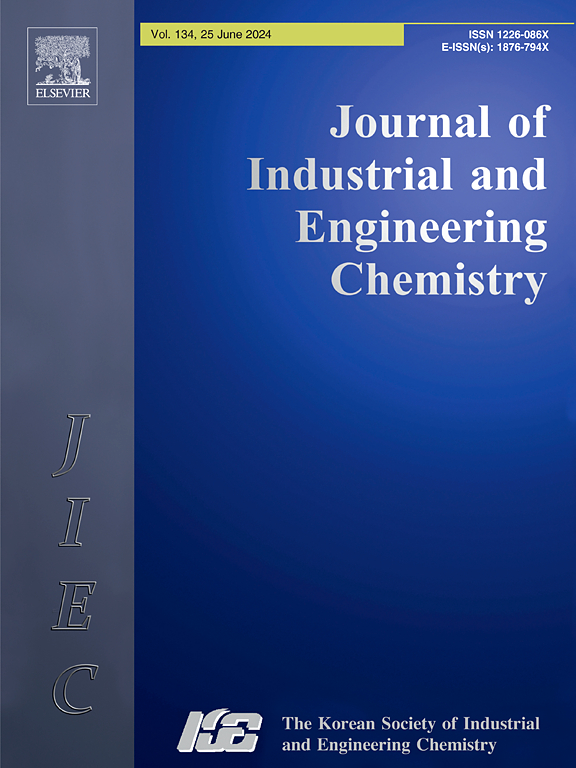Effect of addition of NWCNTs on the performance of carbon black generated using liquid-phase plasma for energy storage in supercapacitors
IF 5.9
3区 工程技术
Q1 CHEMISTRY, MULTIDISCIPLINARY
Journal of Industrial and Engineering Chemistry
Pub Date : 2024-11-19
DOI:10.1016/j.jiec.2024.11.037
引用次数: 0
Abstract
Hydrogen gas was produced using a novel liquid phase plasma (LPP) process that is differentiated from the existing hydrogen production methods, and the liquid phase plasma carbon black (LPPCB) produced at the same time was mixed with carbon nanotubes (CNT) and applied as a conductive material for an Electric double-layer capacitor (EDLC). The initial charge speed of the conductive material mixed with MWCNT and LPPCB in a ratio of 3:2 was confirmed to be much faster than those of samples with other mixing ratios, and the CV area was also the largest. As the content of multi-walled carbon nanotubes (MWCNT) in the EDLC electrode increased, the electrical conductivity increased, but it was predicted that the electrical conductivity would decrease if the content of MWCNT increased excessively due to poor physical dispersion. In addition, the resistance of the electrode could be lowered when LPPCB and MWCNT existed at the same time. The added value of LPPCB produced with hydrogen by the LPP method was confirmed, and its performance as a conductive material for EDLC was confirmed to improve when MWCNT was added.

添加 NWCNT 对利用液相等离子体生成的用于超级电容器储能的炭黑性能的影响
采用一种不同于现有制氢方法的新型液相等离子体制氢工艺,同时制备的液相等离子体炭黑(LPPCB)与碳纳米管(CNT)混合,作为导电材料应用于电双层电容器(EDLC)。MWCNT和LPPCB以3:2比例混合后的导电材料初始充电速度明显快于其他混合比例的样品,CV面积也最大。随着EDLC电极中多壁碳纳米管(MWCNT)含量的增加,电导率提高,但预测由于物理分散性差,MWCNT含量过多会导致电导率下降。此外,LPPCB和MWCNT同时存在时,电极的电阻可以降低。证实了LPP法制备的LPPCB的附加值,并证实了加入MWCNT后,其作为EDLC导电材料的性能有所提高。
本文章由计算机程序翻译,如有差异,请以英文原文为准。
求助全文
约1分钟内获得全文
求助全文
来源期刊
CiteScore
10.40
自引率
6.60%
发文量
639
审稿时长
29 days
期刊介绍:
Journal of Industrial and Engineering Chemistry is published monthly in English by the Korean Society of Industrial and Engineering Chemistry. JIEC brings together multidisciplinary interests in one journal and is to disseminate information on all aspects of research and development in industrial and engineering chemistry. Contributions in the form of research articles, short communications, notes and reviews are considered for publication. The editors welcome original contributions that have not been and are not to be published elsewhere. Instruction to authors and a manuscript submissions form are printed at the end of each issue. Bulk reprints of individual articles can be ordered. This publication is partially supported by Korea Research Foundation and the Korean Federation of Science and Technology Societies.

 求助内容:
求助内容: 应助结果提醒方式:
应助结果提醒方式:


